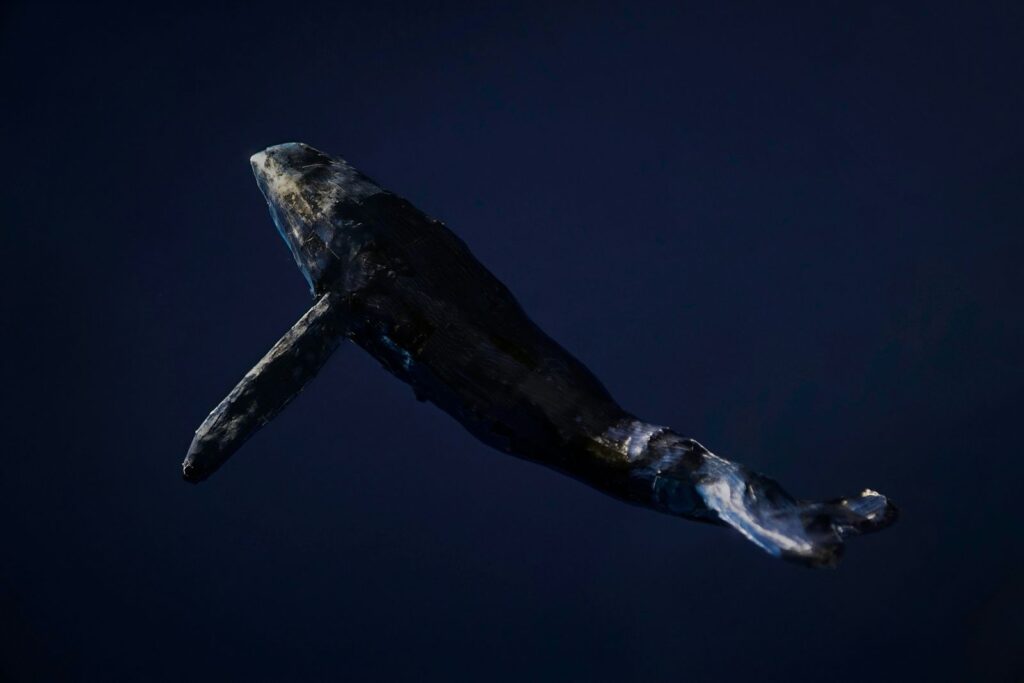Whales can migrate thousands of miles across the globe, a biological mechanism critical for these marine mammal‘s survival.
Migrations are essential for reproduction and feeding, yet these journeys are increasingly difficult due to human-induced environmental changes and direct threats.
Understanding the complexities of migration patterns and the risks animals face amplifies the need to evaluate human interactions and their impact on the oceans.
Main Takeaways:
- Importance of Migration: Whale migrations, often spanning up to 15,000 miles, are critical for reproduction and feeding, connecting different ocean ecosystems and supporting ecological processes.
- Threats to Migration: Climate change, pollution, and human activities such as shipping and industrial fishing disrupt migratory routes, alter food availability, and pose direct threats to whale health and safety.
- Conservation Efforts: Protecting key habitats through marine protected areas, stricter regulations on marine activities, and international cooperation are essential for the continuity and resilience of whale populations.
- Gray Whale Case Study: Gray whales undertake long migrations from Arctic feeding grounds to Pacific nursery lagoons. Historically threatened by commercial whaling, they now face new challenges from climate change and human activities.
- Mitigation Strategies: Reducing noise pollution, developing ropeless fishing gear, and implementing policies to mitigate climate change can help protect whale migrations and ensure a healthier marine environment.

Understanding Whale Migration
Whale migration involves journeys of up to 15,000 miles and is essential for the survival and health of various whale species. These migrations connect different oceanic ecosystems, facilitating ecological processes.
Humpback whales, known for one of the longest migrations, travel thousands of miles from feeding grounds in polar waters to warmer breeding territories. These cyclical journeys are pivotal for reproduction and ensuring access to food resources, which vary seasonally across marine regions.
Climate change and increasing human impacts threaten the integrity of these migration routes. Global warming can change ocean temperature and chemistry, affecting the availability and distribution of prey species and disrupting traditional migratory patterns. Additionally, pollution, such as plastic waste and chemical runoff, compromises the health of habitats. Human activities like shipping and industrial fishing also pose significant risks, leading to potentially fatal encounters between whales and ships.
Conservation efforts are hence important in safeguarding these migratory paths. Protecting key habitats, implementing stricter regulations on marine activities, and mitigating climate change are essential steps in ensuring the continuity and resilience of whale populations. Through international cooperation and robust policy enforcement, the future of whale migrations can be more secure, supporting broader marine biodiversity.
Whales Migration Routes and Patterns
To better understand whale migration, let us examine the key routes and patterns of Gray Whales, which undertake one of the longest and most arduous journeys in the animal kingdom.
Gray whales travel over 15,000 miles roundtrip annually. Their migration begins in the Arctic feeding grounds, where they spend the summer months. As fall approaches, Gray whales form pods and head towards the warmer waters of the Pacific Ocean. Their destination is the nursery lagoons of Mexico, important sites for breeding and calving. This journey is the longest recorded roundtrip for migration.
In the protected lagoons, newborn calves are safer from predators and can build strength for the long journey back to the Arctic. The migration back north in the spring allows Gray whales to access rich, replenished feeding grounds.
Historically, these routes also exposed Gray whales to numerous threats, including commercial whaling, which devastated their populations and brought them to the brink of extinction. Today, while whaling has decreased significantly, the impact of climate change on their Arctic feeding grounds presents a new challenge, altering food availability and migration patterns.
Challenges During Migration
During their migrations, whales encounter numerous hazards, including entanglement in fishing gear. Increased shipping traffic not only raises the risk of fatal collisions but also contributes to underwater noise pollution, which can disrupt whales’ vital behaviours, such as navigation, communication, and feeding.
Climate change further complicates their journeys by altering ocean temperatures and currents, affecting the distribution of prey populations. As whales follow their migratory paths, they are forced to adapt to these shifts in their food sources, often travelling longer distances to reach adequate feeding grounds. In addition, plastic pollution presents a dire threat, with whales ingesting or becoming entangled in debris, leading to injury or death.
Protecting Whales Migration for Conservation
As whales migrate, they fertilize ocean waters, greatly enhancing marine biodiversity by supporting the growth of phytoplankton, which in turn supports a variety of marine life. Whales can also capture and store carbon, with minimal release in the atmosphere.
Establishing marine protected areas has proven effective in enhancing whale conservation. These sanctuaries safeguard migration routes and breeding areas from human interference. Integrating whale conservation into global policies addressing climate change and biodiversity is essential. Such integration ensures that the conservation of whale populations is seen as a significant component of global environmental strategies.
Future of Whale Migrations
The future of whale migration is significantly threatened by increasing ocean noise pollution, fishing gear entanglement and ship collisions.
Noise pollution is insidious, travelling quickly and extensively underwater. Marine shipping traffic, which has surged due to global commerce, is a major source of noise pollution, with projections suggesting that ship noise could triple by 2050, disrupting whale communication, feeding, and predator avoidance.
Noise pollution can be mitigated more readily than other marine pollutants. Strategies like slowing ship speeds, reducing CO2 emissions and collision risks, developing noise-muffling technologies, and rerouting ships away from key whale habitats are promising strategies to reduce migration risks and help whales thrive.
Emerging technologies like ropeless fishing gear and stricter regulations on new industrial activities in the ocean could further protect whale migration routes. Ensuring a quieter and safer ocean environment for whales is essential as the ocean economy grows and diversifies.
Conclusions
Whale migrations are crucial for the survival and health of various whale species. They facilitate reproduction and feeding while connecting different oceanic ecosystems.
However, these extensive journeys are increasingly threatened by human-induced environmental changes. Climate change alters ocean temperatures and prey distribution, while pollution and human activities, such as shipping and industrial fishing, disrupt traditional migratory routes and pose direct risks to whale health.
Conservation efforts are vital to safeguarding these migratory paths. Strategies include establishing marine protected areas, stricter regulations on marine activities, and international cooperation to address climate change.
Mitigation strategies like reducing noise pollution, developing ropeless fishing gear, and implementing policies to combat climate change are important to protect these critical migration routes. Ensuring a quieter, safer ocean environment for whales is fundamental as human activities in the ocean continue to grow.



